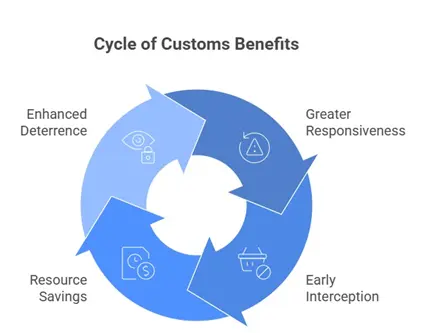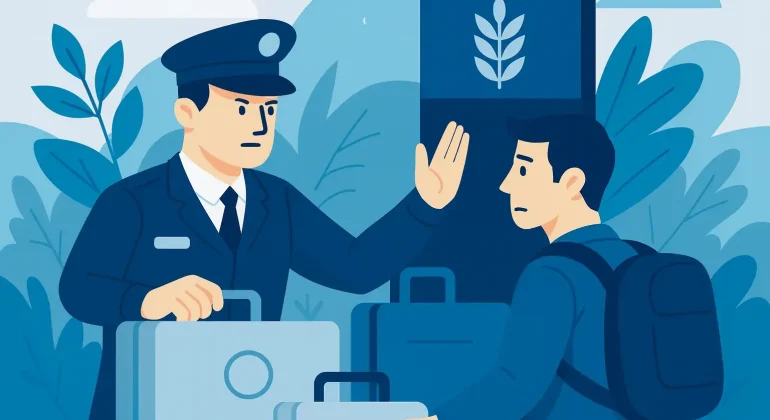The fight against counterfeiting and infringements of intellectual property rights remains a major economic, legal, and security challenge, affecting all sectors : fashion, luxury goods, technology, pharmaceuticals, and consumer products alike. Every year, French customs authorities intercept millions of counterfeit goods, representing a significant loss of revenue for rights holders and a tangible risk to consumer safety and health.
In this context, proactive customs action has become a cornerstone of rights enforcement. Under Regulation (EU) No. 608/2013 and its national transposition, notably the French Customs Code and the French Intellectual Property Code, customs authorities have, for several years, held the power to initiate seizures on their own initiative whenever they detect suspicious goods, even in the absence of a prior request from the rights holder. This power, now fully embedded in operational practice and supported by internal administrative guidelines, has profoundly reshaped customs enforcement strategy: it strengthens responsiveness, optimises prevention, and provides an effective mechanism to stem the inflow of counterfeit products into the market.
When mastered and combined with close cooperation between rights holders and customs, this system can serve as a genuine legal and operational shield for any business seeking to protect its intangible assets.
Sommaire
Context and evolution of the legal framework
Customs seizure is a vital tool in the fight against counterfeiting and the illicit importation of goods infringing intellectual property rights. Historically, customs intervention often required an explicit request from the rights holder. However, European and national legislation has progressively expanded the powers of customs administrations, enabling them to act ex officio when they identify suspicious goods, in accordance with Regulation (EU) No. 608/2013 and Articles L. 521-1 et seq. of the French Intellectual Property Code.
In France, customs authorities may initiate a seizure whenever there is objective evidence suggesting a potential infringement. This interpretation offers a major strategic advantage to rights holders, who thus benefit from proactive protection.
Conditions and procedure for implementation
Seizure initiated by customs authorities
A seizure may be triggered in two ways:
- Following a prior application for action filed by the rights holder, valid for a set period and renewable.
- Through spontaneous detection by customs, even without a prior application, where clear signs of counterfeiting or infringement are identified.
Customs services then act without delay to prevent the goods from being dispersed, securing them in designated storage facilities.
Rights and obligations of the rights holder
Once the seizure has been carried out, the rights holder is promptly notified and is granted:
- A period of 10 working days (extendable) to initiate legal proceedings or confirm the infringement.
- The option to request simplified destruction if the declarant or holder of the goods does not oppose the seizure.
In return, the rights holder must provide proof of their rights (registration certificates, evidence of use where applicable) and work closely with customs to qualify the goods.
Practical advantages for rights holders
The expansion of customs’ role brings several key benefits:
- Greater responsiveness: action is possible even without an initial request.
- Early interception of counterfeit flows before they reach the market.
- Time and resource savings for rights holders, enabling them to focus on litigation stages.
- Enhanced deterrence: infringing importers know that monitoring is continuous.

Limitations and precautions
Despite these advantages, certain precautions remain essential:
- Keep customs applications for action up to date to cover all product categories and countries of origin.
- Provide customs with detailed product identification sheets to facilitate rapid detection.
- Anticipate costs and timelines linked to legal proceedings if the seizure is contested.
- Be aware of the risk of unjustified detention and the need to verify the infringement promptly.
Conclusion and outlook
The ability of customs authorities to initiate seizures on their own initiative significantly strengthens the protection of intellectual property rights. Combined with proactive cooperation between rights holders and customs, this power can substantially reduce the inflow of counterfeit goods into the territory.
The European legal framework may evolve further in the coming years, particularly to reinforce cooperation between Member States and improve information sharing.
Dreyfus Law Firm is in partnership with a global network of attorneys specialising in Intellectual Property.
Nathalie Dreyfus, with the support of the entire Dreyfus team.
FAQ
1. What is a customs seizure?
It is the detention by customs authorities of goods suspected of infringing an intellectual property right.
2. Can customs act without a request from the rights holder?
Yes, if there is objective evidence of counterfeiting.
3. What is the deadline to act after notification of a seizure?
Generally 10 working days, with the possibility of extension.
4. What documents must be provided to customs?
Registration certificates, evidence of use, and detailed product identification sheets.
5. Does this mechanism apply to all forms of intellectual property?
Yes, including trademarks, designs and models, copyright, patents, and geographical indications.

